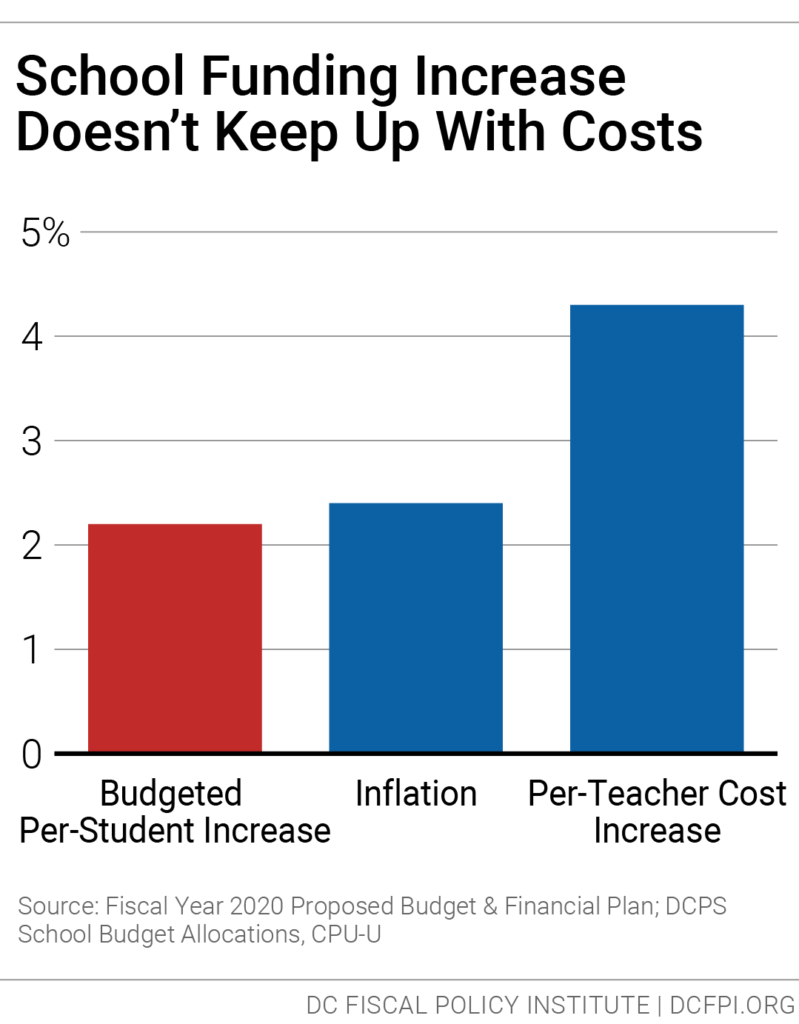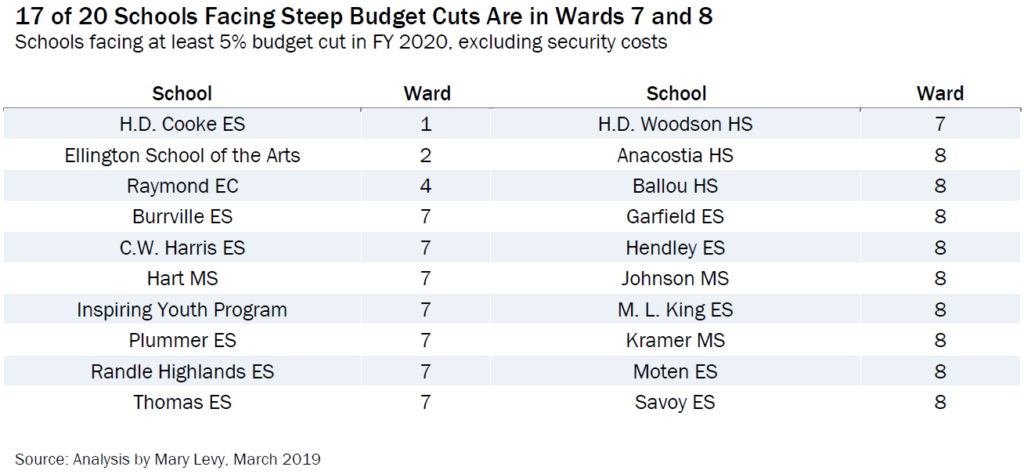CONTACT: Simone Holzer 202-886-5175 sholzer@dcfpi.org
17 of the 20 DC public schools facing steep budget cuts next year are in Ward 7 or Ward 8, according to an analysis by the DC Fiscal Policy Institute. The DCFPI report also finds that overall funding for DCPS will not keep up with rising costs, leading to cuts in many schools.
The report, What’s in the FY 2020 Budget for PreK-12 Education?, takes a deep dive into the proposed education budget for fiscal year (FY) 2020, as part of the DC Fiscal Policy Institute’s annual “Budget Toolkit” series.
DCFPI found that under the proposed budget, per-student funding would grow less than inflation and less than the average cost increase of a DC Public School teacher (Figure 1). The proposed funding increase is 2.2 percent, compared with inflation of 2.4 percent and a 4.3 percent increase in the average cost of a DCPS teacher. That means that overall, schools may not be able to maintain current staff and services.

DCFPI’s analysis also noted that the proposed DCPS budget includes a wide range of winners and losers. Notably, the schools losing funding are mostly east of the Anacostia River. DCFPI identified 20 schools that will see funding cuts of 5 percent or more, when security costs are not included, using data compiled by DCPS budget expert Mary Levy. Of those 20 schools, 17 are in Ward 7 or Ward 8 (Table 1). (Security costs were included in local school allocations for the first time in the proposed FY 2020 budget.)
“A funding formula that leaves schools in our lowest-income communities worst off is broken,” said Ed Lazere, Executive Director of DCFPI. “The proposed schools’ budget is a step backward from the goal of achieving educational equity.”
The report also notes that under the proposed budget DCPS will continue to divert half of the resources intended to serve students considered “at-risk”. Analysis by Mary Levy suggests that at least half of the DCPS at-risk funds are being used to supplant core staffing and services, rather than being used as intended—to provide supplemental services to help students succeed.
“Year in and year out, our leaders talk about the urgency of eliminating educational achievement inequities, yet they put forward budgets that we know will perpetuate these inequities. As a prosperous city, we can and should do more to focus education resources on the students who are being left behind,” said Lazere.

###
